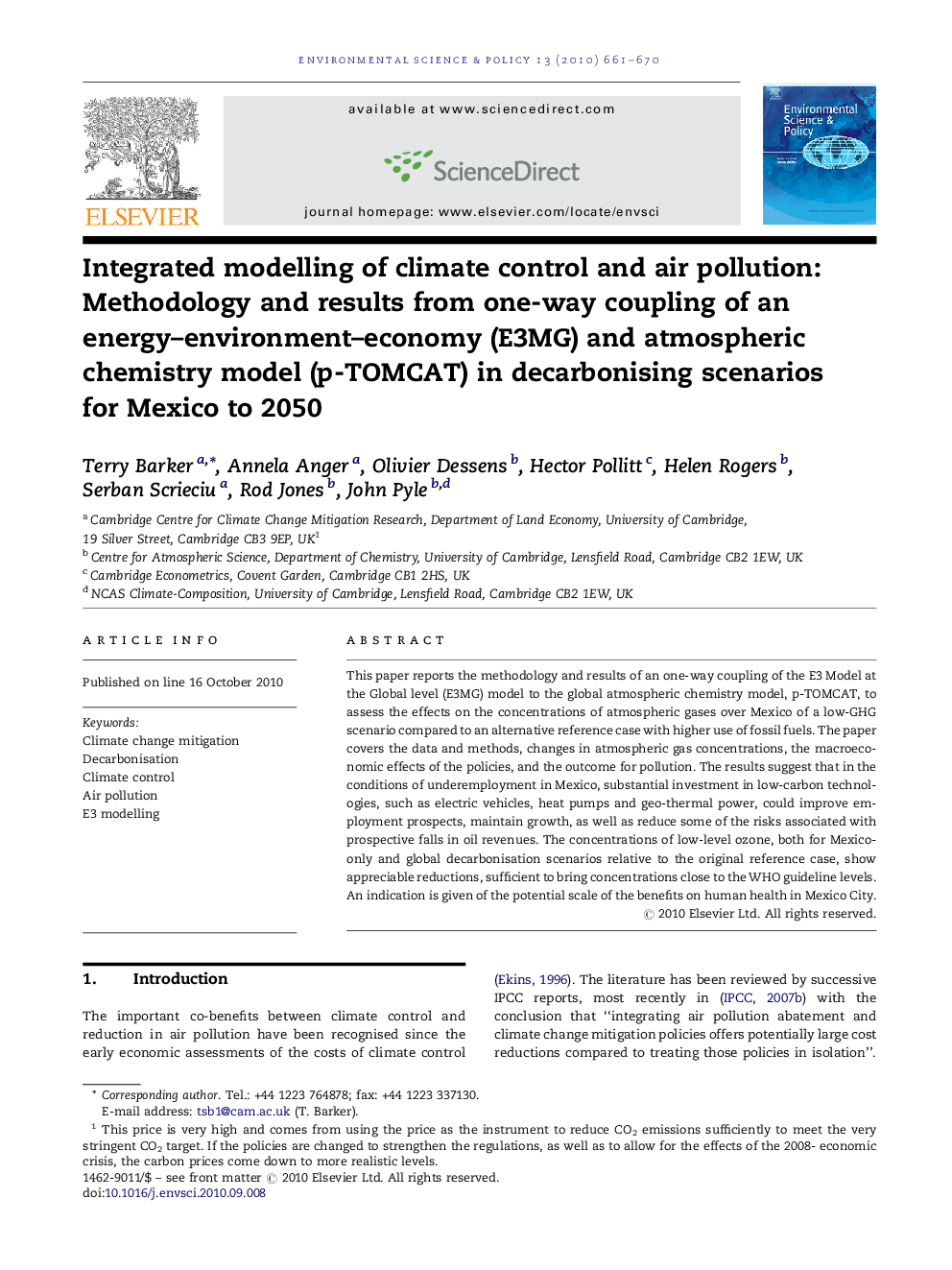| Article ID | Journal | Published Year | Pages | File Type |
|---|---|---|---|---|
| 1053935 | Environmental Science & Policy | 2010 | 10 Pages |
This paper reports the methodology and results of an one-way coupling of the E3 Model at the Global level (E3MG) model to the global atmospheric chemistry model, p-TOMCAT, to assess the effects on the concentrations of atmospheric gases over Mexico of a low-GHG scenario compared to an alternative reference case with higher use of fossil fuels. The paper covers the data and methods, changes in atmospheric gas concentrations, the macroeconomic effects of the policies, and the outcome for pollution. The results suggest that in the conditions of underemployment in Mexico, substantial investment in low-carbon technologies, such as electric vehicles, heat pumps and geo-thermal power, could improve employment prospects, maintain growth, as well as reduce some of the risks associated with prospective falls in oil revenues. The concentrations of low-level ozone, both for Mexico-only and global decarbonisation scenarios relative to the original reference case, show appreciable reductions, sufficient to bring concentrations close to the WHO guideline levels. An indication is given of the potential scale of the benefits on human health in Mexico City.
Graphical abstractFigure optionsDownload full-size imageDownload as PowerPoint slideResearch highlights▶ In Mexico investment in decarbonisation could maintain output and reduce oil-revenue risks. ▶ Low-carbon scenarios give co-benefits of lower emissions of SO2, NOx, VOCs and CO. ▶ 80% decarbonisation by 2050 is sufficient to bring Mexican O3 concs. near to WHO guideline averages.
